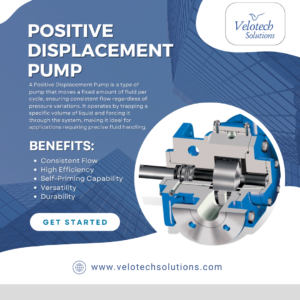Choosing the right pump for an industrial system affects energy use, reliability, maintenance costs and regulatory compliance. Modern pump selection software (offered by vendors like Grundfos, KSB, Wilo and specialist engineering tools) removes guesswork and helps engineers pick, size and document pumps that meet system duty, efficiency and life-cycle objectives. Below are the main benefits backed by industry guidance and studies.
1. Lower energy use and big operating-cost savings
Pump systems often represent a large share of a plant’s electricity use. Properly sized and optimized pumps operate closer to their Best Efficiency Point (BEP), cutting wasted energy. Industry guidance and case studies show that system optimization and better pump selection can reduce pumping energy by a large margin often measured in double-digit percentages which translates to significant annual savings.
Why it matters: Energy is usually the largest lifetime cost for pump systems, so a small efficiency improvement yields fast payback.
2. Reduced life-cycle cost (LCC) not just lower upfront price
Pump selection software enables life-cycle cost comparisons (purchase + energy + maintenance + downtime) across candidate pumps, so engineers can choose solutions with the best total cost over time not only the cheapest initial quote. This LCC approach is recommended in DOE guidance and industry whitepapers.
Practical result: Often a slightly higher-cost, more efficient pump yields lower total cost of ownership and longer service life.
3. Improved reliability and reduced risk of cavitation/failure
Advanced selection tools calculate NPSH (Net Positive Suction Head), show pump curves, and flag risky duty points. By ensuring adequate NPSH margin and avoiding operation far from the BEP, software helps reduce cavitation, vibration and premature component wear — improving uptime and lowering maintenance frequency. Academic research and industry analyses emphasize the connection between correct hydraulic selection and reduced cavitation risk.
4. Faster, repeatable engineering and fewer specification errors
Selection software replaces manual curve reading and spreadsheet guesswork with guided inputs (flow, head, fluid properties, temperature, system curves). The result: faster selection, consistent results across projects, and less rework during procurement. Many vendor tools also export datasheets and tender texts automatically, saving time in documentation.
Benefit to teams: Shorter engineering cycles, standardization across projects, and easier handover to procurement and operations.
5. Better sizing for multi-pump and parallel systems
Modern tools simulate parallel pump operation and variable speed drives so you can size systems that perform well across part-load conditions. This prevents chronic issues like pumps running outside safe operating ranges during low-flow periods.
6. Faster quoting and BOM/submittal generation (procurement-friendly)
Vendor selection platforms commonly produce ready-to-use performance datasheets, part numbers and submittal packages — reducing procurement errors and lead-time ambiguity. This streamlines ordering, manufacturing lead-time estimations and project tracking.
7. Integration with CAD, control systems and asset-management workflows
Some selection and engineering tools can export 3D models, MCAD files, or integrate with asset management and ERP systems — which helps during installation planning, commissioning and spare-parts management.
8. Compliance, traceability and audit readiness
Selection software keeps selection records, assumptions, and performance curves in one place. That audit trail helps demonstrate due diligence for safety, environmental or procurement audits and speeds up approvals for regulated projects.
9. Data-driven optimization and “what-if” scenario analysis
Because inputs (fluid data, duty cycles, energy costs) are explicit, teams can run scenario analyses — e.g., evaluate energy cost sensitivity, lifetime maintenance scenarios or alternate pump configurations — to support design decisions with numbers.
10. Supports sustainability and corporate ESG goals
Choosing energy-efficient pump systems reduces greenhouse-gas emissions and energy intensity — a tangible contribution to sustainability targets. Life-cycle thinking (enabled by software) aligns pump procurement with corporate ESG objectives.
Quick ROI checklist what to track after deployment
-
Baseline energy consumption (kWh) before and after swap/optimization.
-
Annual maintenance hours and repair costs.
-
Unplanned downtime incidents related to pumps.
-
Spare-parts inventory turns and lead-time reductions.
-
Project engineering hours saved through automation.
Tracking these lets you quantify the software’s impact and build a business case for wider rollout.
Choosing the right pump selection software short buying tips
-
Vendor vs. neutral tools: Vendor tools (Grundfos/KSB/Wilo) give detailed product data and submittals; neutral engineering tools may offer system modelling and broader vendor comparisons.
-
Features to prioritize: BEP/NPSH checks, multi-pump simulation, LCC calculators, exportable datasheets/CAD, API/ERP integration.
-
Data freshness: Ensure vendor product databases and performance curves are up to date.
-
User experience & training: Prefer tools with good documentation and export options for procurement.
Conclusion
Pump selection software is no longer a “nice to have” — it’s an engineering multiplier that reduces energy costs, improves reliability, speeds procurement, and enables life-cycle decision-making. For industrial plants where pumps run thousands of hours per year, the right software pays back quickly through energy savings, fewer failures and streamlined operations.
Contact us today to schedule a free consultation and see how our smart pump software can transform your operations.






